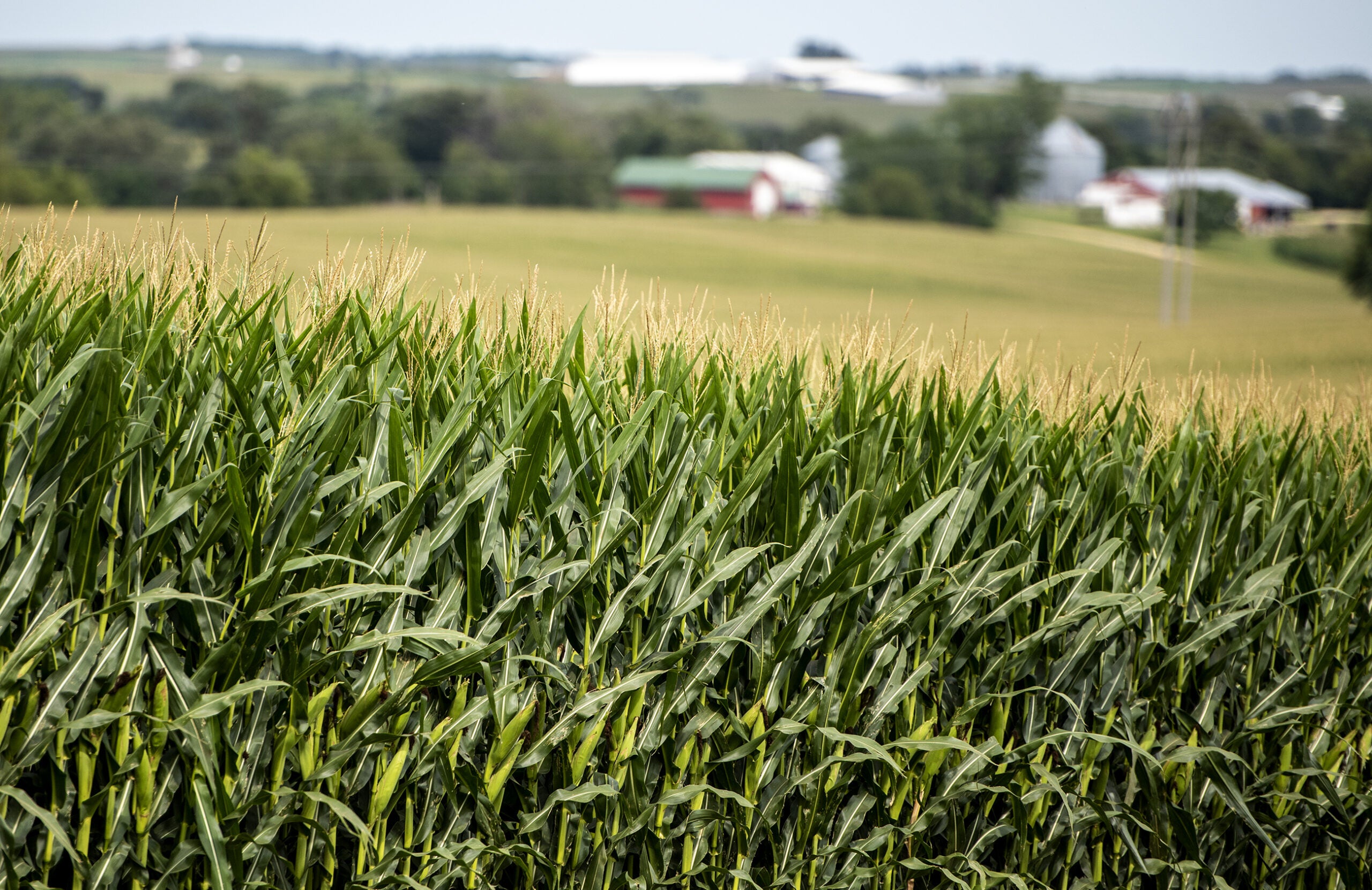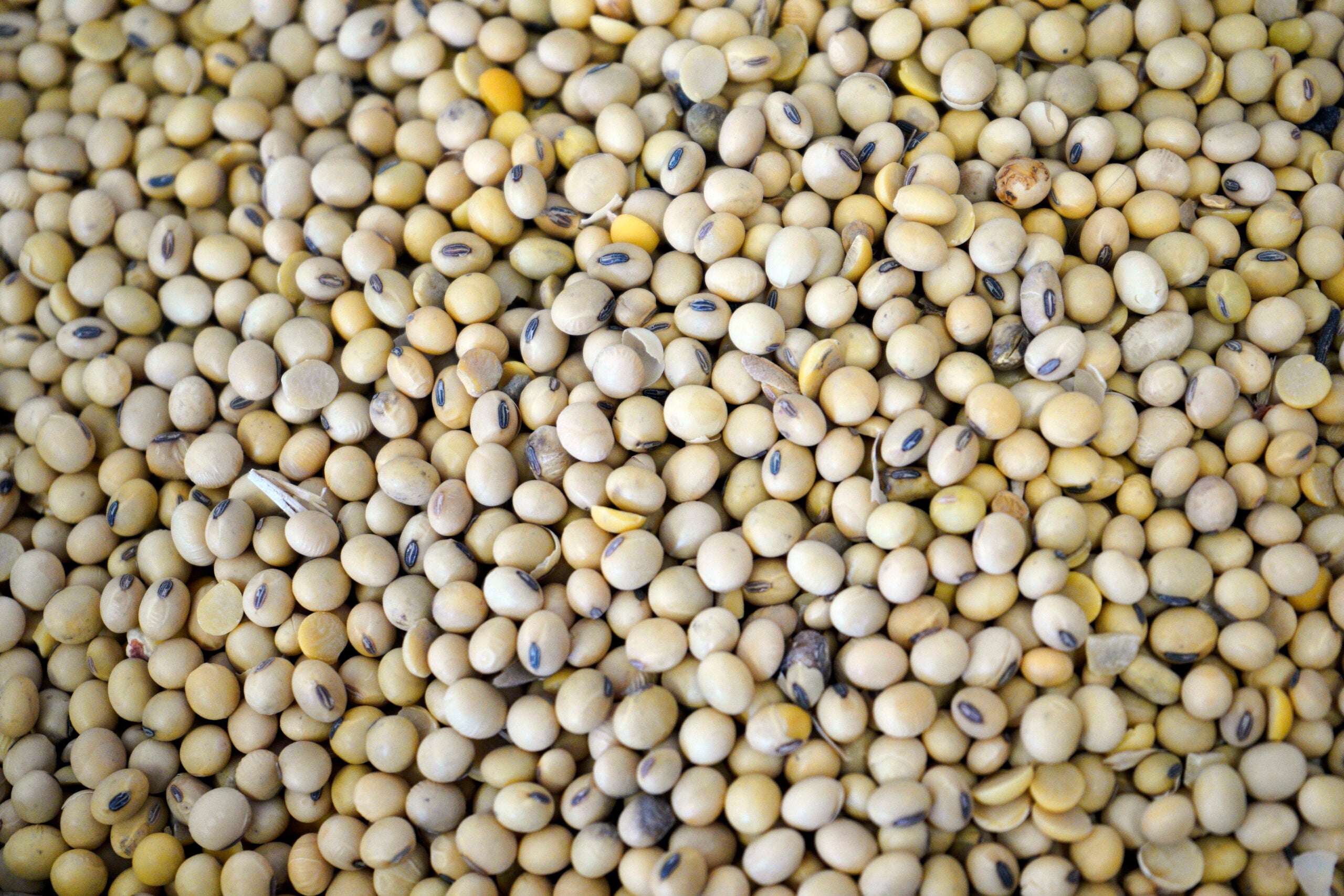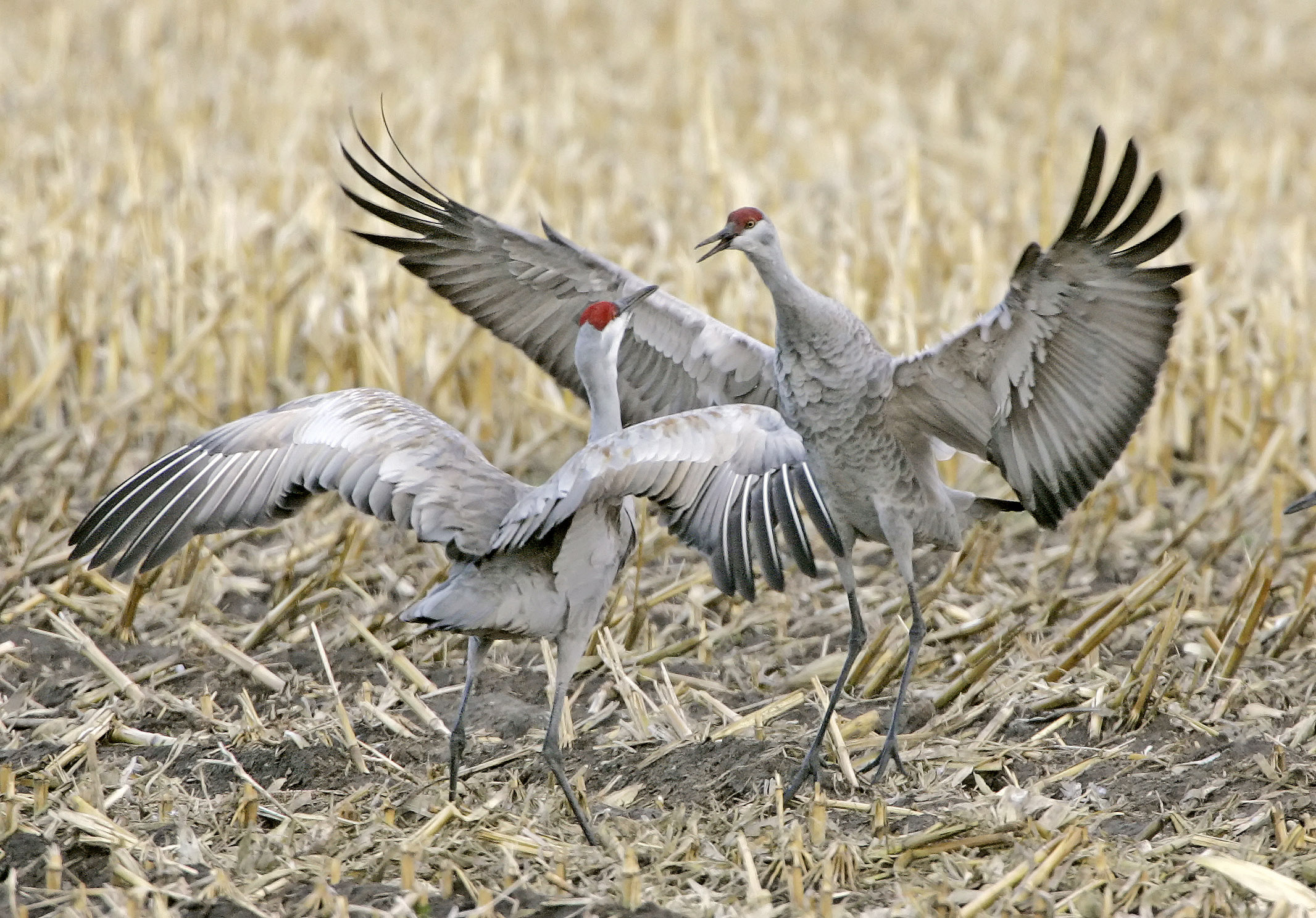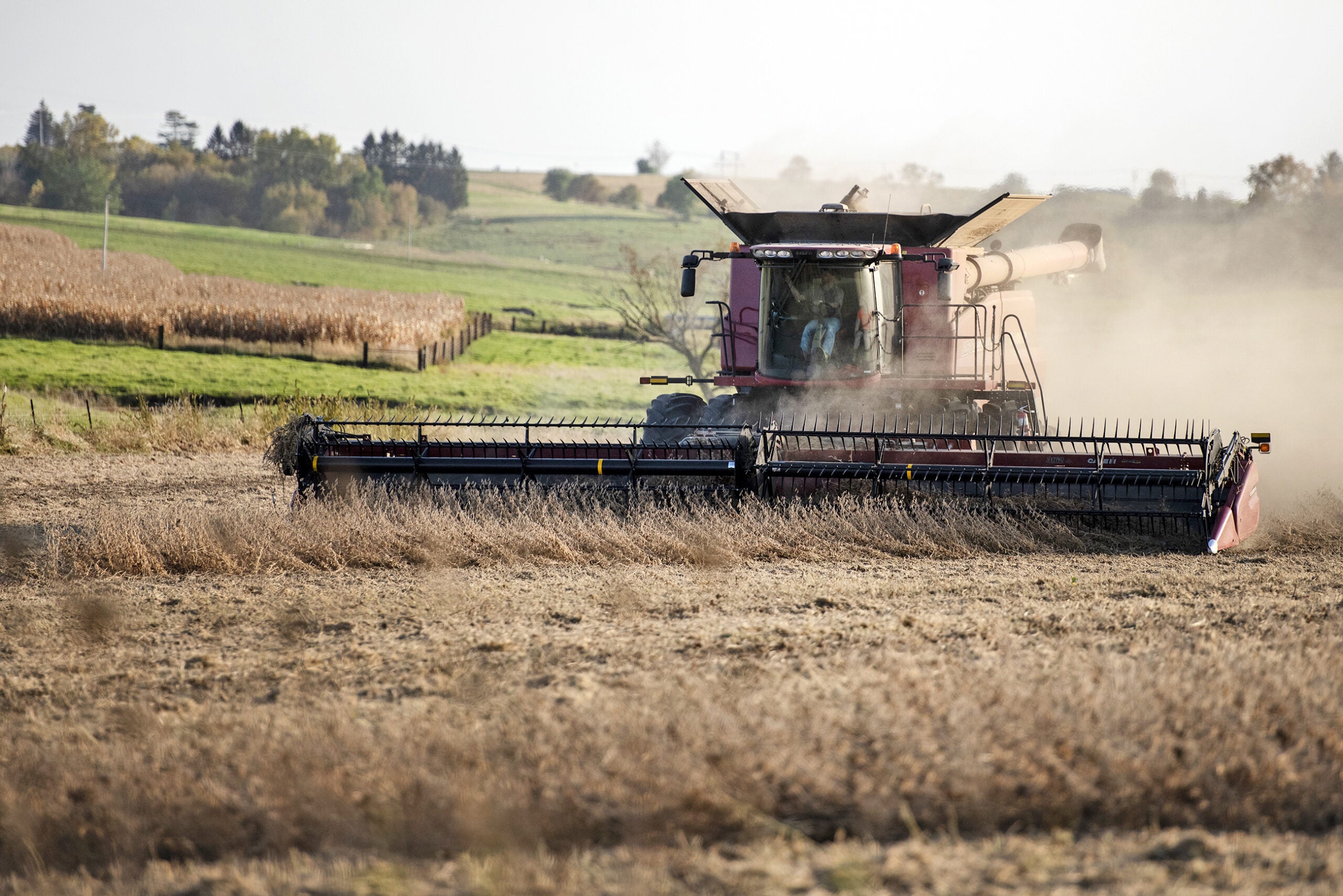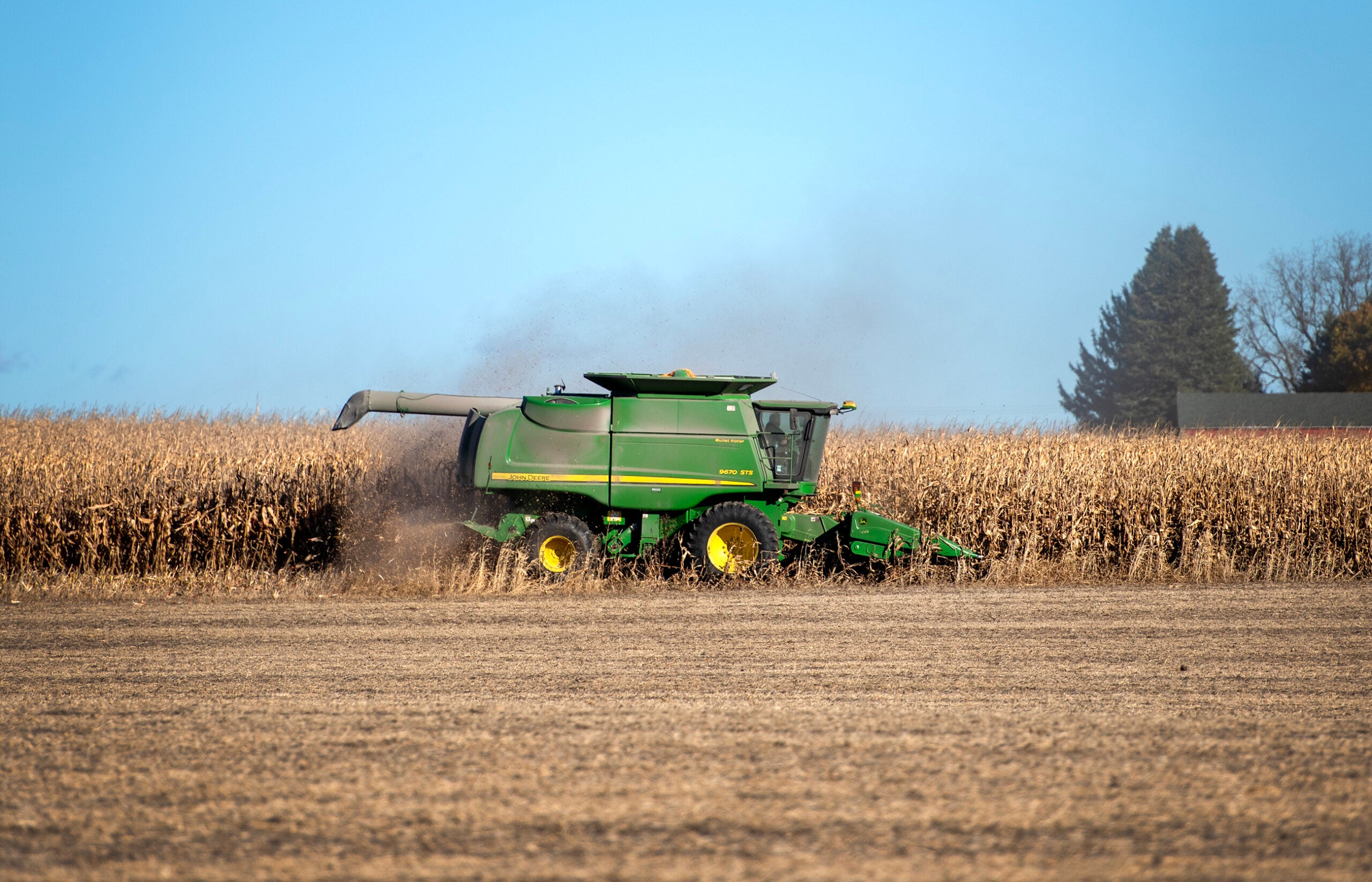Mike Turner grows corn, alfalfa and soybeans on his dairy farm near Baraboo. He saw less than 5 inches of rain this growing season, and is one of many farms that suffered under continued drought conditions in southern Wisconsin.
Now nearing the end of harvest, Turner said his corn yields have been down between 10 and 30 percent per acre depending on the field.
“To be honest, a lot of us around here are actually kind of shocked with some of the yields we are getting for that lack of rain,” he said. “We figured it would have been less in some of our fields.”
Stay informed on the latest news
Sign up for WPR’s email newsletter.
But roughly 90 miles away, corn and soybean farmer Luke Goessling brought in above average yields on his 700 acres near Whitewater. He said many of his neighbors have seen the same strong production.
“Things are definitely better than what we were expecting,” Goessling said. “With the lack of moisture that we were getting throughout the season here, everybody’s scratching their heads trying to figure out where this crop came from.”
Goessling and Turner are two of the many farmers across Wisconsin reporting mixed results for corn and soybean yields as harvest wraps up for the year.
This summer brought months of below normal precipitation, leading most farms to fear the worst for their crops. But many producers have said yields are coming in less disastrous than expected, or in some cases better than normal this fall.
“It’s kind of a tale of two extremes,” said Joe Lauer, agronomy professor at the University of Wisconsin-Madison. Lauer said soil quality is one of the biggest factors in whether a farm had a good or bad year. He said crops planted on areas with light, sandy soils weren’t able to withstand the lack of precipitation, but plants in higher quality soils came out ok even in the driest areas.
For most fields, Lauer said the lack of moisture held back crop progress for much of the season, especially during pollination in mid-July. He said that means many plants weren’t able to dry out enough in the field and will have to be dried using machines after harvest.
“Farmers want to get the crop off before it snows, so they’re going to be harvesting corn with a little bit wetter moisture and that’s going to add to the expense of production,” he said.
It’s just one of the financial considerations farmers will have to make as they end this growing season and start thinking about next year.
On Turner’s dairy farm, he expects to have less corn to sell this winter to help cover expenses and get ready for spring.
“So the dairy will have to pick it up a little more than it has been for paying bills at the end of the year for seed and everything,” Turner said.
For Goessling, he said bringing in above average yields will help make up for the high costs he had to cover at the start of this year.
“This by far was one of the most expensive crops we ever put in the ground,” he said. “Coming off of that, and trying to manage every penny that we had to start the year off, it’s definitely a godsend to see what we have out here.”
Wisconsin Public Radio, © Copyright 2025, Board of Regents of the University of Wisconsin System and Wisconsin Educational Communications Board.
